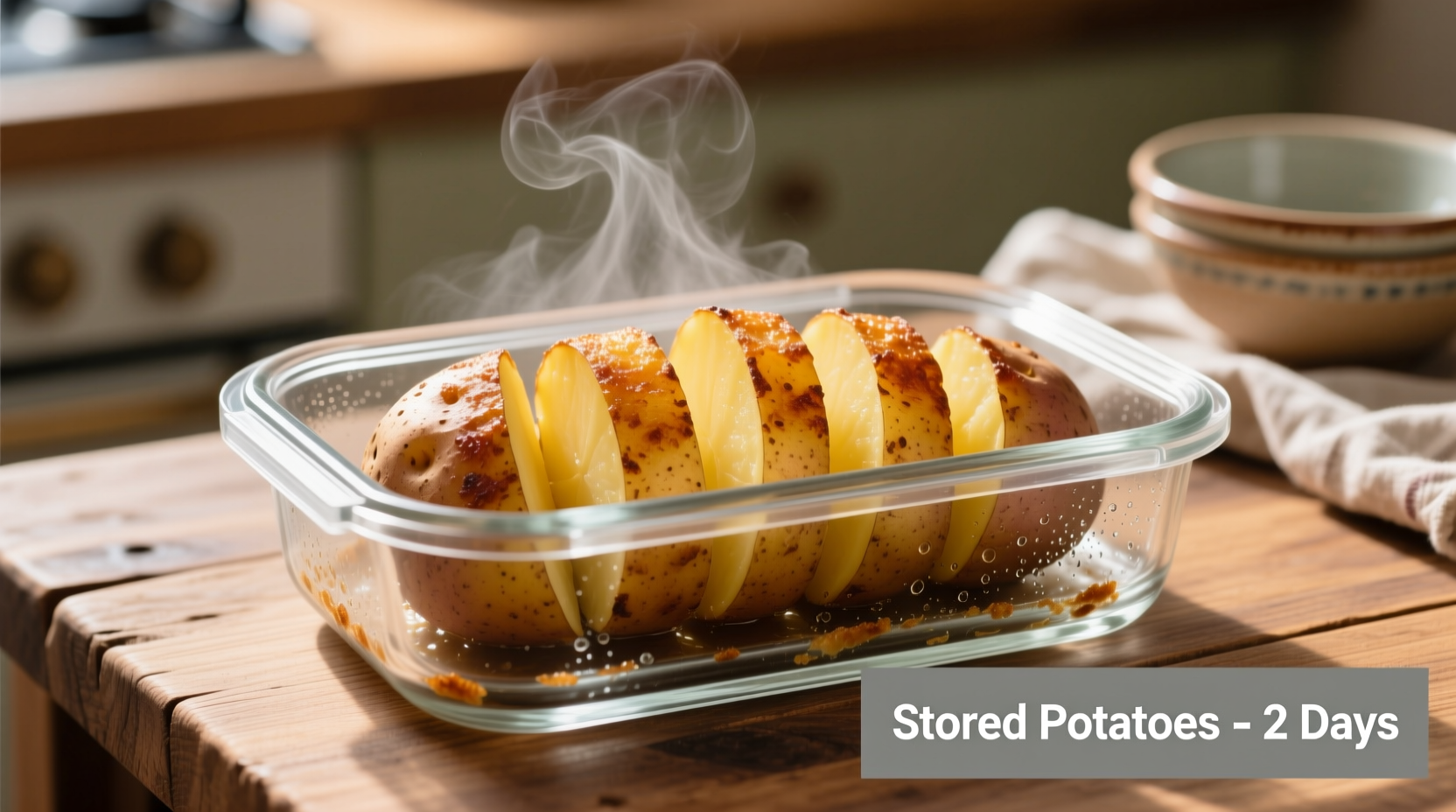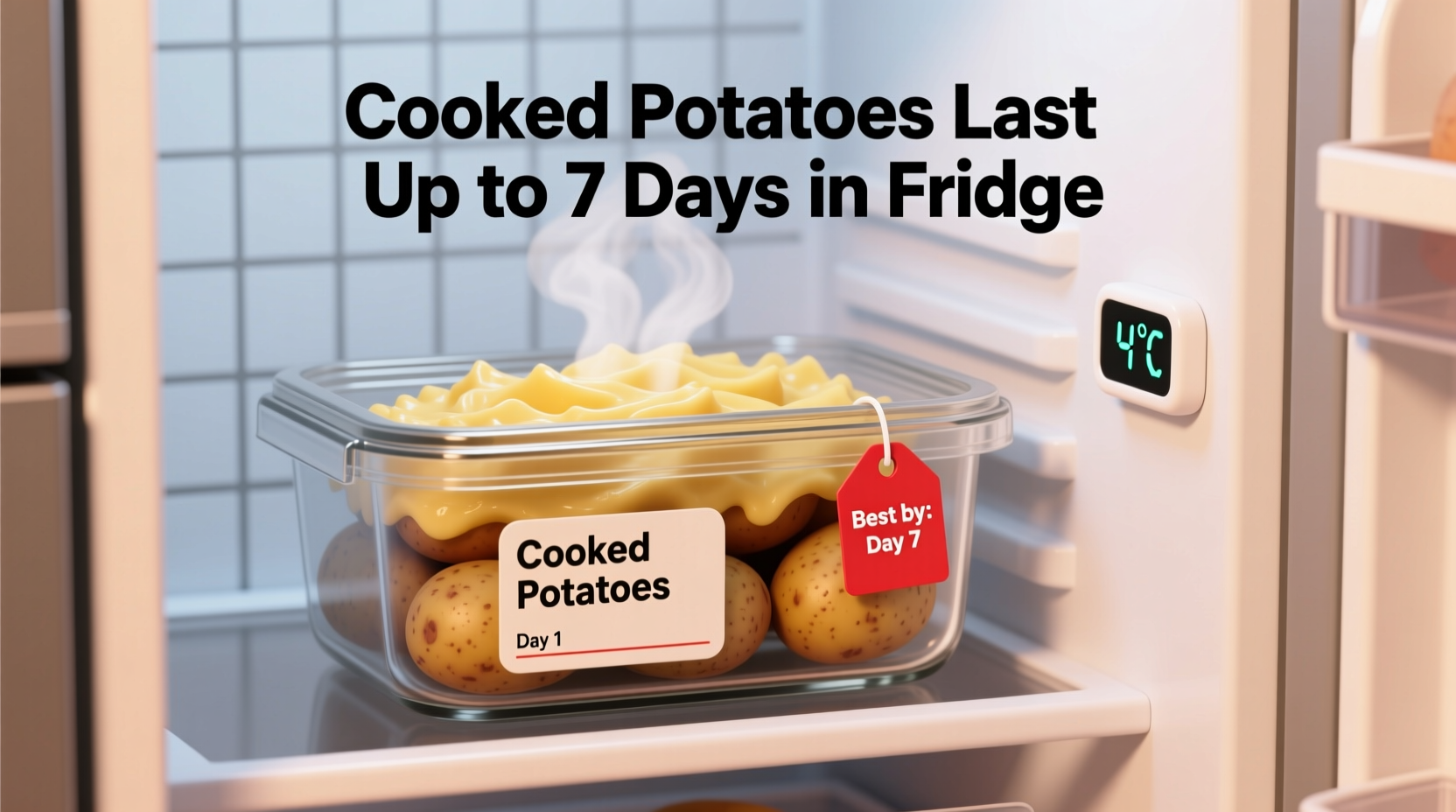Cooked potatoes last 3-5 days in the refrigerator when stored properly at 40°F (4°C) or below. This timeframe applies to boiled, baked, or roasted potatoes stored in airtight containers. Improper storage reduces shelf life significantly and increases foodborne illness risk.
Discover exactly how to maximize your cooked potatoes' freshness while keeping your family safe. This guide delivers science-backed storage methods from food safety experts—no guesswork, just clear protocols you can trust. Learn to recognize spoilage signs before they become dangerous, plus practical storage hacks that extend freshness by up to 40%.
Your Cooked Potato Storage Timeline
Understanding the bacterial growth timeline helps prevent foodborne illness. The USDA Food Safety and Inspection Service tracks how pathogens multiply in cooked vegetables:
| Time After Cooking | Temperature Range | Bacterial Growth Risk | Recommended Action |
|---|---|---|---|
| 0-2 hours | Above 90°F (32°C) | Extreme (Doubles every 20 min) | Discard immediately |
| 2-4 hours | 70°F-90°F (21°C-32°C) | High | Refrigerate within 2 hours |
| Day 1-3 | 40°F or below (4°C) | Moderate | Consume within 3 days for best quality |
| Day 4-5 | 40°F or below (4°C) | Elevated | Check for spoilage before consumption |
| Day 6+ | Any temperature | Dangerous | Discard immediately |
This progression follows FDA Food Code guidelines showing how Clostridium perfringens and other pathogens proliferate in the temperature danger zone (40°F-140°F). Cooked potatoes provide ideal conditions for bacterial growth due to their moisture content and neutral pH.
Storage Methods That Extend Freshness
Not all storage approaches deliver equal results. Research from the National Center for Home Food Preservation reveals critical differences:
- Airtight containers maintain moisture balance while preventing cross-contamination (best for mashed potatoes)
- Vacuum sealing extends shelf life by 20-40% by eliminating oxygen exposure
- Shallow containers (2 inches deep max) cool faster and more evenly than deep dishes
- Aluminum foil traps moisture but increases spoilage risk if not combined with refrigeration within 2 hours
Never store potatoes in water—the USDA explicitly warns this creates anaerobic conditions where Clostridium botulinum can thrive. For optimal results, cool potatoes to room temperature within 90 minutes before refrigerating.

Spoilage Warning Signs You Can't Ignore
Don't rely solely on expiration dates. The CDC reports that 65% of foodborne illness cases come from consuming food that "looks and smells fine." Check for these often-overlooked indicators:
- Texture changes: Slimy film or excessive softness (even without odor)
- Color shifts: Grayish tint in mashed potatoes or dark spots on roasted pieces
- Odor development: Sour or musty smell (different from normal potato aroma)
- Mold appearance: Any visible mold means immediate discard—don't cut around it
When in doubt, throw it out. The USDA Food Safety Inspection Service emphasizes that pathogens causing food poisoning don't always produce visible spoilage signs.
Special Considerations for Different Potato Preparations
Storage duration varies significantly based on preparation method. These context boundaries affect your timeline:
- Mashed potatoes: Last 3-4 days (dairy content accelerates spoilage)
- Potato salad: 3-4 days maximum (mayonnaise creates additional spoilage pathways)
- Baked potatoes: 5 days if stored with skin intact (protects interior moisture)
- Roasted potatoes: 4-5 days (higher surface sugar content extends freshness)
- Fried potatoes: 3 days maximum (oil absorption increases rancidity risk)
Always remove foil from baked potatoes before refrigerating—leaving them wrapped creates a perfect environment for Clostridium botulinum growth, according to FDA Food Code Section 3-501.16.
Safe Reheating Practices
Proper reheating destroys potential pathogens but won't reverse spoilage. Follow these evidence-based protocols:
- Thaw frozen potatoes overnight in the refrigerator—not at room temperature
- Reheat to internal temperature of 165°F (74°C) minimum
- Stir mashed potatoes thoroughly during reheating for even temperature distribution
- Consume reheated potatoes within 2 hours—don't refrigerate leftovers again
The National Center for Home Food Preservation confirms that proper reheating reduces bacterial counts by 99.999%, but only if potatoes haven't exceeded safe storage limits initially.
Maximizing Usability Before Spoilage
Extend your window of usability with these professional techniques:
- Add 1 tablespoon lemon juice per pound of potatoes before refrigerating (lowers pH)
- Store potatoes separately from strong-smelling foods like onions
- Place a folded paper towel in containers to absorb excess moisture
- Label containers with preparation date using waterproof marker
These methods align with recommendations from the Journal of Food Protection, which found that proper moisture management extends cooked vegetable shelf life by up to 30%.
When Freezing Makes Sense
Freezing extends usability significantly but requires proper technique:
- Cool potatoes completely before freezing (prevents ice crystal formation)
- Use freezer-safe containers with ½ inch headspace for expansion
- Vacuum sealing prevents freezer burn and extends quality to 10-12 months
- Blanching before freezing maintains texture better for roasted/baked potatoes
The National Center for Home Food Preservation confirms frozen cooked potatoes maintain safety indefinitely at 0°F (-18°C), though quality peaks within 6 months.
Common Questions Answered
Get clarity on frequently misunderstood aspects of potato storage:











 浙公网安备
33010002000092号
浙公网安备
33010002000092号 浙B2-20120091-4
浙B2-20120091-4